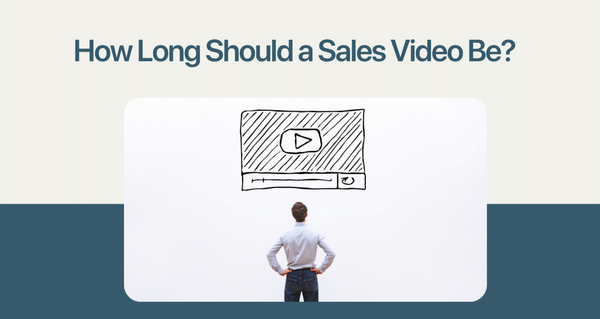Every day, it seems like there's a new marketing trend to keep up with. And while some of them may be gimmicks that will fizzle out over time, others can be game-changers for your business.
To be successful in marketing, it's no secret that you need to personalize your content. After all, if you're not speaking to your audience directly, how can you expect them to connect with your brand?
But what about going beyond the basics of personalization and into the realm of hyper-personalization? This is where things get interesting...
Stay tuned – it's worth your attention!
What is Hyper-Personalization?
Hyper personalization is creating highly customized experiences for users based on their individual needs and preferences. This can be done through targeted content, personalized recommendations with images and videos, and custom interfaces.

Source: https://www.engati.com/blog/hyper-personalization
The goal of hyper-personalization is to create an experience that feels unique to each user to meet their needs and preferences better. This can result in higher engagement and satisfaction rates and increased conversions and loyalty.
There are a few key ways to implement hyper-personalization:
1. Website Personalization
By tracking a user's activity on your website (e.g., which pages they visit, how long they stay on each page, what items they add to their shopping cart but don't purchase, etc.), you can then personalize the content of subsequent pages that they visit.
This can be as simple as displaying a different version of the same web page based on who is viewing it. It could be more complex such as recommending specific products or offers to individual users based on their past behavior.
2. Email Personalization

Like website personalization, email personalization involves tracking a user's interactions with your emails (e.g., which links they click, whether they open and read the email, etc.) and using that information to send them more targeted and relevant emails in the future.
3. Product Recommendation Engines
Perhaps the most well-known form of hyper-personalization, product recommendation engines are used by many online retailers (such as Amazon) to suggest items to users based on real-time past purchase history and browsing behavior.
By understanding what a user likes and dislikes, these recommendation engines can provide a much more personalized experience designed to keep the user coming back for more.
4. Personalized Images and Videos
By using personalized images and videos in your outreach, you can make a much more human connection with your audience with customer data.

This could involve creating custom images or videos for specific segments of your audience or simply adding their name or other personal details to the image or video itself.
Also Read: 10 Genius Personalized Video Marketing Examples You Need To See
Is Hyper-Personalization Needed?
Though hyper-personalization might be seen as a recent development, it's been around for quite some time.
Even old-school marketers used it to segment their audiences and delivered more targeted messages. However, with the advent of real-time data and advanced analytics, we now can take things to a whole new level.
Hyper-personalization is all about using data to create personalized experiences for individual users.
This might include serving up different content based on what they're interested in, providing recommendations based on past behaviors, or even just showing them ads that are more relevant to their needs.
Done right, hyper-personalization can be a powerful marketing strategy for delivering higher client satisfaction at a lower cost.
Why Context is Important in Hyper-Personalization?
Context is critically important when it comes to hyper-personalization. For example, the same search results that might be relevant for someone in San Francisco might not be relevant for someone in Mumbai.
Contextual factors such as the location from which the device is accessed, the time of day, and even what type of device is being used can all play a role in determining which content is most relevant to a person at any given moment.
So marketing professionals need to take all of these contextual factors into account when personalizing content for their users.
The Best App for Your Hyper-Personalization Strategy
There's no one-size-fits-all answer to this question, as the most effective apps for your hyper-personalization strategy will vary depending on your specific goals and target audience. However, we can recommend one great option to get you started.
For example, VideoForm is an app that lets you send personalized videos to each user with their info pre-filled in. This is a great way to add a personal touch to your communications and make sure that each user feels seen and valued.
Using personalized videos is a great way to connect with your customers personally with relevant content. It helps build trust and loyalty and encourages them to return to your site or shop again in the future.
7 Benefits of Using Hyper-Personalization in Marketing
1. It Builds Trust
When customers feel like you understand them and their needs, they are more likely to trust your brand and be loyal to it. Take, for example, the case of a customer who buys a pair of shoes from an online store.
If the store sends them a follow-up email that says, "Thank you for your purchase," the customer is unlikely to feel particularly valued or understood.

However, suppose the store instead sends a personalized image or video that mentions the specific shoes the customer bought and their first name and includes information about other products.
In that case, the customer is much more likely to appreciate the extra effort and feel positive about the brand.
As a result, they are more likely to trust the brand and make future purchases. In today's competitive marketplace, making that extra effort to build trust through hyper-personalization can be the key to success.
Also Read: How is Creative Automation a Leading Indicator for Retention and Loyalty?
2. It Fosters a Stronger Connection With Customers
It can be tough to stand out from the crowd in a world where consumers are bombarded with marketing messages. Enter hyper-personalization. Using data to deliver highly tailored content allows companies to forge a stronger connection with their customers.
And when done right, it can be pretty darn effective. Just take the example of Coca-Cola's Share a Coke campaign.

By personalizing bottles with popular names, the brand encouraged customers to seek out and share photos of their own named Coke on social media. The result? A 7% lift in sales. Not too shabby.
Of course, hyper personalization strategies aren't without their challenges. Getting the balance right between tailored and creepy can be tricky, and there's always the risk of coming across as inauthentic.
But when done well, hyper-personalization is a powerful marketing tool that can help brands forge a deeper connection with their customers.
3. It Leads to Better Customer Retention Rates
Think about the last time you purchased a brand you loved. Maybe it was a new pair of shoes or a gadget you'd been eyeing for a while. Regardless of what it was, you likely felt good about that purchase - like you made the right decision in choosing that particular brand.
Now, compare that to a purchase you made where you didn't know much about the brand beforehand. Chances are, you don't feel as confident. You might even feel like you wasted your money.
This difference in customer satisfaction is largely due to hyper-personalized marketing. When a brand takes the time to get to know its customers - their likes, dislikes, needs, and wants - and then tailors its marketing accordingly, it builds trust and loyalty. And that leads to better retention rates over time.
So if you're looking to keep your customers happy (and keep them coming back for more), hyper-personalized marketing is the way to go.
4. It Generates Higher Conversion Rates
We've all seen those generic emails that are mass-produced and contain no personalized information whatsoever. They're easy to spot, and most of us delete them without a second thought.
But what about those emails that seem to be written specifically for us? The ones that mention our name or refer to our recent purchase? Those are the ones that make us sit up and take notice. And according to studies, they're also more likely to result in a conversion.
So if you're looking to increase your conversion rate, focus on personalizing your messages. It's a small change that can make a big difference.
5. It Improves Overall ROI
There's no doubt that hyper personalization can greatly impact your business. But what does that mean for your bottom line? Simply put, it leads to increased ROI. How? Let's take a look at an example.

Say you're a retailer who uses hyper personalization to send targeted messages to each of your customers. You know that Customer A is interested in purchasing a new dress, so you send her a message specifically about that dress. She clicks on the link, purchases the dress, and picks up a few other items while she's at it.
On the other hand, you would have just sent out a generic message to all of your customers without hyper personalization. Customer A might not have even seen the message, let alone clicked on it.
As you can see, hyper personalization can result in more sales and higher ROI. So if you're not already using it, now is the time to start!
6. Hyper-Personalized messages are more likely to be opened and read
In the business world, first impressions are everything. You only have one chance to make a good impression on a potential client, and if your message falls flat, you may never get another chance.
That's why it's so important to personalize your messages as much as possible. When you take the time to customize each message for your specific audience, you're far more likely to stand out from the crowd and get noticed.
And once you have their attention, you're far more likely to convert them into paying customers. So if you're looking for a surefire way to get your messages read, try hyper-personalization. It just might be the best business decision you ever make.
7. More Effective Campaigns
Again, hyper-personalization is the Holy Grail of marketing, and for a good reason. By tailoring messages specifically for individual customers or groups of customers, you can create campaigns that are far more effective than traditional mass marketing.
And as the example of Amazon shows, hyper-personalization can pay off handsomely in terms of increased sales and loyalty.
Of course, not every company has the resources of Amazon, but there are still plenty of ways to use hyper-personalization to boost your bottom line. So if you're looking for a more effective way to reach your customers, hyper-personalization is worth considering.
What's Next?
Hyper-personalization is a powerful tool to help you create more relevant and engaging marketing campaigns.
By understanding your customer's unique needs and preferences, you can deliver content that feels tailored just for them.
If you want to start using hyper-personalization in your marketing, our team at VideoForm would be happy to help. We can have a demo with you to show you how personalization works and discuss the best ways to implement it in your campaigns.
Thanks for reading!




